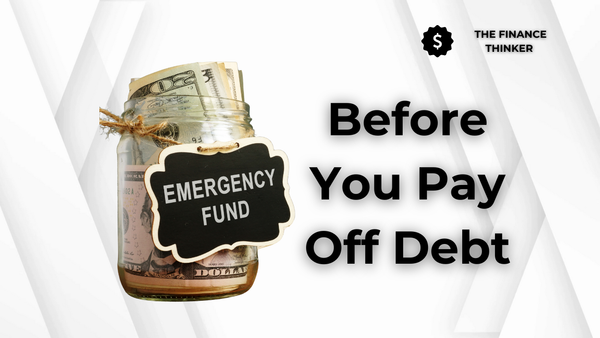Getting Out of Debt: A Clear Roadmap to Financial Freedom

Debt can feel like a heavy weight on your shoulders—quietly draining your peace of mind, your wallet, and your future. But here’s the truth: getting out of debt is possible, and more achievable than most people think. Whether it's credit card balances, student loans, or personal loans, you can break free and build a life of financial confidence. Here’s how to take back control, step by step.
Step 1: Face the Numbers Honestly
Before you can fix the problem, you need to understand it. That starts with getting a complete picture of your debt:
- Make a list of all debts—include the type of debt, balance, interest rate, minimum payment, and due date.
- Calculate your total debt load. The number might be scary, but clarity is power.
This exercise alone can be eye-opening. Many people realize they’ve been underestimating how much they owe—or how high their interest rates really are.
Step 2: Create a Realistic Budget
Getting out of debt requires freeing up money each month. That starts with a spending plan:
- Track your income and expenses for 30 days.
- Cut non-essentials ruthlessly—subscriptions, takeout, impulse buys.
- Allocate a fixed monthly amount toward debt repayment.
Your budget is the foundation of your debt-free journey. Every extra dollar you can squeeze out helps shorten the path.
Step 3: Choose a Payoff Strategy That Works for You
There are two tried-and-true strategies to paying off debt:
- Debt Snowball: Pay off the smallest balance first while making minimum payments on the rest. This gives quick wins and builds momentum.
- Debt Avalanche: Focus on the highest-interest debt first to save more money long-term.
Pro tip: If you’re motivated by quick wins, go with the snowball. If you're focused on math and saving on interest, avalanche is better.
Step 4: Negotiate and Consolidate Wisely
If high interest rates are eating your budget, consider:
- Calling creditors to request lower interest rates or payment plans.
- Debt consolidation loans to combine multiple debts into one lower-interest loan.
- Balance transfer credit cards, which often offer 0% APR for 12–18 months (only if you can pay it off before the promo ends).
Avoid payday loans or debt settlement companies—these often make things worse.
Step 5: Increase Your Income
Cutting costs is powerful—but increasing your income can turbocharge your debt payoff:
- Take on a side hustle (freelancing, rideshare, online tutoring).
- Sell unused items.
- Ask for a raise or switch to a higher-paying job if you can.
Even an extra $200–$500 per month can dramatically reduce your debt timeline.
Step 6: Automate and Stay Consistent
Set up automatic payments so you never miss a due date. Use tools like calendar reminders or budgeting apps to stay on track.
Remember, consistency matters more than perfection. If you fall off track one month, get back on the next. This is a marathon, not a sprint.
Step 7: Change the Habits That Got You Into Debt
Debt isn’t just a financial problem—it’s often a behavioral one. Reflect on your past patterns:
- Are you an emotional spender?
- Do you use credit cards to fund a lifestyle you can’t afford?
- Do you avoid checking your account balance?
Work on changing those habits. Read books, follow personal finance creators, or work with a coach if needed. Knowledge is empowering—but discipline is liberating.
Final Thoughts: Your Future is Worth Fighting For
Getting out of debt isn’t just about numbers—it’s about freedom. It’s about being able to sleep at night without financial anxiety, having the power to make choices, and building a future on your own terms.
You didn’t get into debt overnight, and you won’t get out of it overnight either. But with a plan, patience, and persistence, you will become debt-free—and stay that way.
The best time to start was yesterday. The second-best time is today.



